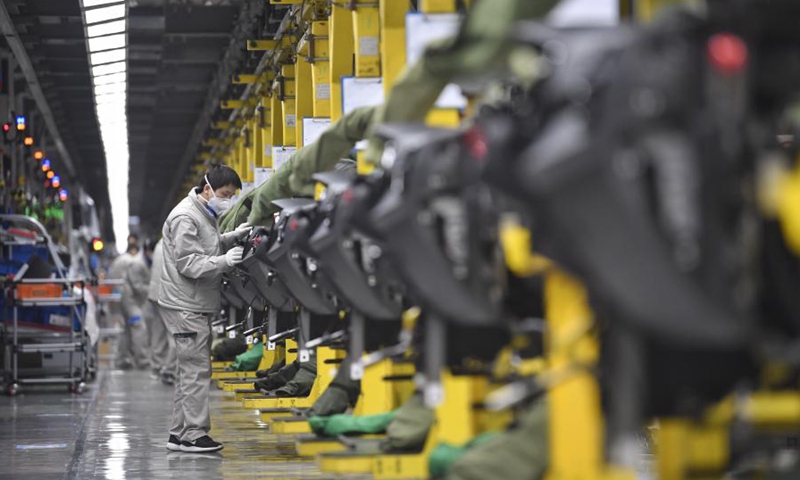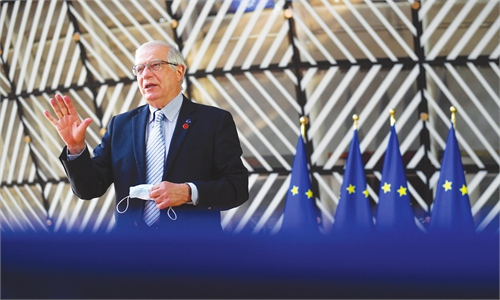
People work at the assembly workshop of FAW-Volkswagen Automobile Co., Ltd. in Chengdu, southwest China's Sichuan Province, Feb. 19, 2020.(Photo: Xinhua)
The price of palladium, mainly used in catalytic converters for gasoline-fueled automobiles, hit a record high on Monday amid Russia-Ukraine tensions, as Russia is a major palladium supplier to the world.
But analysts said that there should not be much impact on the palladium supply in the Chinese auto industry in the short term, as reserves will cover production for four to six weeks.
The price of palladium opened at $3,158 per ounce (28.3 grams) on Monday in New York, up from $2,930 at the Friday closing. It is more expensive than gold.
Palladium prices are expected to continue rising for two to three months, but reserves in countries can cover about four to six weeks of production, Zhang Xiang, a research fellow at the Research Center of Automobile Industry Innovation under the North China University of Technology, told the Global Times on Monday.
"Palladium is used to treat exhaust fumes from gasoline-powered cars, for which demand is falling as China and other countries are pushing to produce electric vehicles. There should be little impact on supply," said Zhang.
In 2021, 2.95 million new-energy vehicles (NEVs) were newly registered in China, accounting for 11.3 percent of total newly registered cars, an increase of 151.61 percent year-on-year.
In 2022, the penetration rate of NEVs will be about 22 percent, according to the China Passenger Car Association.
"Russia, South Africa, Canada, and the US have been the world's leading producers of palladium. Russia's palladium exports accounted for nearly 50 percent of global production, and 80 percent of palladium consumption comes from catalytic converters in cars," an industry insider told the Global Times on Monday.
Russian enterprise Norilsk Nickel PJSC (Nornickel) is the world's largest producer of nickel and palladium, and one of the world's top 10 copper producers.
The global palladium market will be 300,000 ounces (8.5 metric tons) short of supply in 2022, said Nornickel in February.
"Nornickel may reduce or even suspend production due to the sudden Russia-Ukraine conflict, which would have a huge impact on global platinum and palladium supply," said the industry insider.
Combined with low operating rates at the largest palladium mine in South Africa due to the COVID-19 outbreak, expectations of a palladium shortage in the near term are strong, said the insider.
The US sources 35 percent of its palladium from Russia, which means that US sanctions on Russia is also harmful to the US industry, said the insider.
Zhang also warned of the short supply of cathode materials such as zinc and nickel, which have limited natural resources and are also more crucial to the production of the automobile industry.



